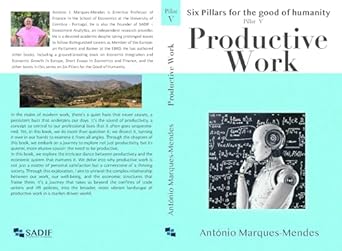Question
QUESTION 1 _________________ is an intense and rapid improvement process in which a team or a department throws all its resources into an improvement project
QUESTION 1
- _________________ is an intense and rapid improvement process in which a team or a department throws all its resources into an improvement project over a short period of time
Value analysis | ||
PDSA Cycle | ||
Breakthrough improvement | ||
Kaizen event/blitz |
QUESTION 2
- What is the value of the Deming Cylcle?
It speeds implementation of improvement ideas by eliminating experimentation and collaboration. | ||
It adds time to the continuous improvement philosphy, so practitioners can consider the impact of their actions. | ||
It helps management "sell" improvement concepts to customers. | ||
It provides an application of scientific method to achieve continuous improvement. |
QUESTION 3
- The Improve phase of the Six Sigma DMAIC methodology is considered a highly creative process, as opposed to analytical. True False
QUESTION 4
- Which of the following would be considered a key approach to supporth the Improvement phase of DMAIC?
Kaizen events | ||
Poka-Yoke | ||
Process flow analysis | ||
Creative thinking/brainstorming | ||
All of the above |
QUESTION 5
- If a process shows common cause variation, the process is said to beout of control. True False
QUESTION 6
- Which ofthe following terms is associated with operationsflexibility?
Cycle time | ||
Agility | ||
Neither of the above | ||
Both cycle timeandagility |
QUESTION 7
- Kaizen is the Japanese term for Breakthrough Improvement True False
QUESTION 8
- __________ is an approach for mistake-proofing processes using automatic devices or methods to avoid simple human error:
PSDA Cycle | ||
DFMEA | ||
Poka-Yoke | ||
None of the above |
QUESTION 9
- ______________________ is a methodology for monitoring a process to identify variation and identify when it is appropriate to take action.
Statistical Process Control (SPC) | ||
Upper and Lower Control Limits (UCL and LCL) | ||
Standard Operating Procedures (SOPs) | ||
Normal cause variation |
QUESTION 10
- In essence, the role of the Improve phase of DMAIC is to consider the project definition, measurements, and analysis to determine thebest possible concept(s) to improve a product or process. True False
QUESTION 11
- ____________________ refers to the abiliy to adapt quickly to changing requirements.
Kaizen blitz | ||
Flexibility | ||
Breakthrough improvement | ||
Kaizen |
QUESTION 12
- Which of the following could be considered an element of a Control System?
A standard or a goal | ||
A means of measurement | ||
Comparison of actual to expectations, with feedback for corrective action | ||
All of the above |
QUESTION 13
- Which of the following isnota tool or methodology for the Control phase of DMAIC?
Standard Operating Procedures (SOPs) | ||
Statistical Process Control (SPC) | ||
Histograms | ||
Audit processes |
QUESTION 14
- Which of the following would be indictive of a process that is in statistical control?
All data points inside the control limits | ||
Relatively equal number of data points above and below the center line | ||
Random distribution of data points above and below the center line | ||
Most, but not all, points close to the center line | ||
All of the above |
QUESTION 15
- The Improvement Phase of DMAIC could be considered more of an "art" than a "science". True False
QUESTION 16
- Six Sigma and Continuous Improvement are incompatible processes, as they represent different philosophies True False
QUESTION 17
- Breakthrough improvement is a practice that is highly similar to continuous improvement. True False
QUESTION 18
- The formula Y = f(X) is used in the Measure stage of the DMAIC methodology. What does theXstand for?
X = unknown. | ||
X = the 'response' variable. | ||
X = A critical input variable. | ||
X = Target value. |
QUESTION 19
- The _____________ standards focus on developing, documenting, and implementing procedures to ensureconsistency of operations performance in production and service delivery processes, with the aim of continual improvement, and supported by the principles of total quality
Deming Prize | ||
Baldrige Award | ||
ISO 9000:2000 | ||
Six Sigma |
QUESTION 20
- Variation will always exist in business processes, but will be predictable assuming 'special cause' variation is absent. True False
QUESTION 21
- In which stage of the DMAIC methodology are quality tools such as standard operating procedures (SOPs), checklists, and statistical process control charts (SPCs) commonly used?
Define | ||
Measure | ||
Analyze | ||
Improve | ||
Control |
QUESTION 22
- 'Big Q' refers to product/service quality, while 'little q' refers to Total Quality Management (TQM). True False
QUESTION 23
- Quality Management is important because empirical evidence suggests that it has the potential to improve the following performance measures:
income | ||
sales growth | ||
cost control | ||
employment level | ||
all of the above |
QUESTION 24
- Which of the following parties would be accountable for process perfomance and should be given the authority to control and improve their process?
Stakeholders | ||
Six Sigma Green Belts | ||
Supervisors | ||
Process owners |
QUESTION 25
- The institution of scientific management techniques in the early 1900s shifted responsibility for quality from the production department to the quality department.
True | ||
False |
Step by Step Solution
There are 3 Steps involved in it
Step: 1

Get Instant Access to Expert-Tailored Solutions
See step-by-step solutions with expert insights and AI powered tools for academic success
Step: 2

Step: 3

Ace Your Homework with AI
Get the answers you need in no time with our AI-driven, step-by-step assistance
Get Started


